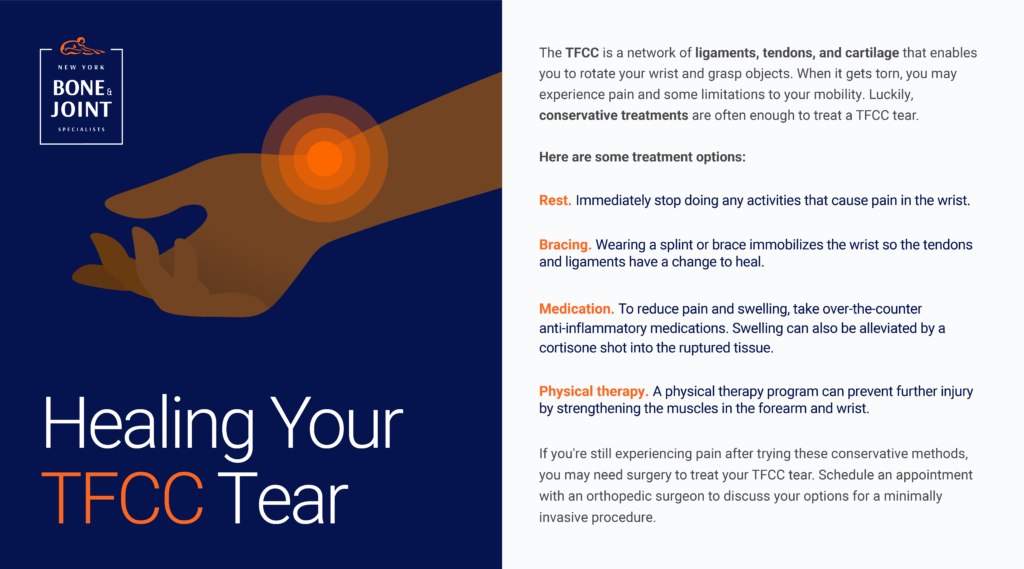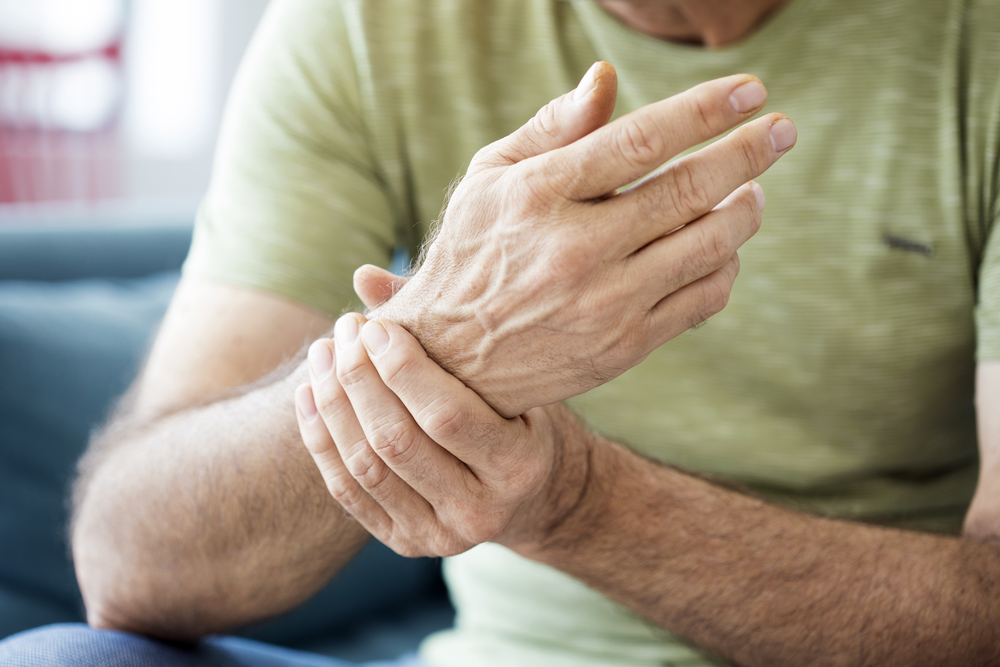While you may not often think about the triangular fibrocartilage complex (TFCC) in your wrist, there’s one scenario where it will instantly become top of mind: when it gets torn. Learn more about the tears and how to treat them.
Is your wrist painful and stiff? Did you fall and now you can no longer move your wrist like you did before? It may be due to a triangular fibrocartilage complex (TFCC) tear.
You’ve probably never heard of the TFCC before, but this network of ligaments, tendons, and cartilage is what enables you to rotate your wrist and grasp objects. It also stabilizes your wrist by connecting your forearm bones (the ulna and radius) to the small bones in your wrist. You can tear your TFCC in two ways, which we will discuss in the next section. If you think you’ve torn your TFCC, your best course of action is to seek conservative treatment to heal it and get your wrist working again.
The two types of TFCC tears
While tennis players, gymnasts, and other athletes who use their wrists to perform their sport are most vulnerable to TFCC tears, anyone can experience the injury. TFCC tears are classified as one of two types based on how the injury occurred:
Injury. Injury-based TFCC tears typically occur due to landing on your hand and wrist after a bad fall can rupture the TFCC. Over-extending your wrist, twisting it very suddenly, or breaking your radius bone can all tear your TFCC.
Degenerative. Degenerative TFCC tears are the result of repetitive motions rather than a single incident. As we age, our tendons and ligaments become thinner and more easily torn. Repetitive motions, such as swinging a bat or a tennis racket, can weaken the tendons and ligaments over time, leading to tears.
Degenerative TFCC tears usually don’t cause any symptoms or pain. More serious tears due to injury are characterized by swelling and a general feeling of weakness in the wrist. You may have trouble gripping objects or have limited range of motion in the joint. You may hear a clicking sound when rotating the wrist, too. Pain along the outside of the pinky finger side of the wrist also indicates a TFCC tear. If those symptoms persist and interfere with your daily activities, see an orthopedist for treatment.
Treating TFCC tears
Minor TFCC tears may resolve without therapy. However, significant tears require treatment to get the wrist mobile again. Diagnosing a TFCC tear involves a physical examination to assess the range of motion in the wrist as well as possible imaging tests, such as an MRI or X-ray, that are used to spot any fractures or tears. Wrist pain can also be attributed to sprains or fractures, so an exact diagnosis is needed before treatment can begin for a TFCC tear.

In most cases, conservative methods can usually heal the tear without the need for surgery. Here are four ways to heal a TFCC tear:
- Rest. Immediately stop doing any activities that cause pain in the wrist.
- Bracing. Wearing a splint or brace immobilizes the wrist so the tendons and ligaments have a change to heal.
- Medication: To reduce pain and swelling, take over-the-counter anti-inflammatory medications. Swelling can also be alleviated by a cortisone shot into the ruptured tissue.
- Physical therapy. A physical therapy program can prevent further injury by strengthening the muscles in the forearm and wrist.
Conservative therapy can heal the tear within weeks. If conservative treatment fails to mend the tear, surgery may be recommended. Surgery for a TFCC tear involves a minimally invasive arthroscopy procedure where tiny incisions are made along the outer edge of the wrist so the surgeon can access the wrist and repair the torn areas of the TFCC. The surgeon may also shorten the ulna, or the long bone in the forearm, to reduce TFCC tear symptoms. After surgery, you will have to wear a cast on your wrist as a surgical repair may take up to several months to heal.
Heal your wrist with NYBJ
Is your painful wrist stopping you from doing your daily tasks? Talk to a doctor at New York Bone & Joint Specialists. Our orthopedists and physical therapists can treat orthopedic disorders in the wrist and other joints and give you back your life. Contact us today for a consultation.




